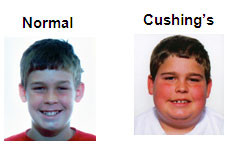Definition
Malnutrition is a condition where the nutrients obtained by the body are imbalanced compared to what is needed. There are two forms of malnutrition: undernutrition and overnutrition. While undernutrition has clear adverse effects on health, overnutrition often receives less attention from parents but can also lead to significant health issues in children.
Nutrients are broadly categorized into macronutrients (proteins, carbohydrates, and fats) and micronutrients (vitamins and minerals). The World Health Organization (WHO) defines malnutrition as the health impacts caused by excessive consumption of micronutrients or macronutrients, leading to specific health side effects. Overnutrition typically results in overweight or obesity. According to WHO, in 2020, 5.7% of children under five years old worldwide were overweight, an increase from 5.4% in 2000. Children who are overweight are four times more likely to become obese adults.
Causes
The primary cause of overnutrition is consuming more nutrients than the body needs.
Risk Factor
Several risk factors for overnutrition in children include:
- Limited choices of nutritious foods
- Sedentary lifestyle
- Metabolic conditions that decrease metabolism, such as hypothyroidism
- Hormonal imbalances that can cause hunger
- Eating disorders like pica
- Excessive use of daily supplements
Symptoms
Children with overnutrition may show several symptoms, including:
- Obesity
- High blood pressure
- Insulin resistance
- Heart disease
- Anemia
- Fatigue
Diagnosis
Doctors will ask questions about the child's eating habits and physical activity, focusing on the child's intake of macronutrients and micronutrients. They will evaluate:
- Family history of obesity and related issues like diabetes
- Child's eating habits
- Child's exercise habits
- Potential underlying diseases
- Child's psychological history, including depression, sleep disorders, and social isolation
Physical examination includes measuring BMI and arm circumference to determine if the child is overweight or obese. Doctors will classify the child's BMI percentile:
- BMI between the 85th and 94th percentiles - Overweight
- BMI at or above the 95th percentile - Obesity
- BMI at or above the 99th percentile - Severe obesity
If necessary, blood tests can be conducted to check:
- Cholesterol levels
- Blood sugar levels
- Hormonal tests
- Micronutrient levels
Management
Treatment for overnutrition in children typically involves weight loss through dietary changes, lifestyle modifications, and increased physical activity, all monitored by a doctor. Doctors will also address any related conditions like thyroid disease and eating disorders.
- Treatment for children with BMI percentiles between 85 and 94
The American Academy of Pediatrics recommends that obese children over two years old be gradually brought down to an overweight category, maintaining their weight as they grow taller to lower their BMI to an ideal range.
- Treatment for children with BMI percentiles of 95 and above
For children aged 6 to 11, lifestyle modifications aim for weight loss not exceeding 0.5 kg per month. Older children should aim for weight loss of about 1 kg per month.
The method used to lose weight for children is also the same: eat healthy foods and increase physical activity. The success of treatment is very dependent on the large commitment of parents in helping their children to make changes
Healthy Eating
Parents play a crucial role in providing and determining their child's diet. Even small changes can have significant impacts. Steps to promote healthy eating include:
- Prioritizing fruits and vegetables
- Limiting sugary drinks
- Avoiding fast food
- Having family meals together
- Serving appropriate portions according to the child's needs
Physical Activity
- Limit screen time
- Find physical activities the child enjoys
Complications
Children with overnutrition are at risk of increased weight gain. Obesity in children can lead to physical and emotional complications such as:
- Type 2 diabetes: A chronic condition associated with excessive sugar intake.
- High cholesterol: Poor diet can cause plaque buildup in arteries, leading to heart attacks and strokes in adulthood.
- High blood pressure
- Joint pain: Excess weight stresses the hips and legs.
- Breathing problems: Overweight children are prone to asthma and sleep apnea.
- Nonalcoholic fatty liver disease (NAFLD): Excess fat accumulation in the liver, leading to liver failure or cirrhosis.\
- Emotional issues: Obese children often face bullying, leading to low self-esteem, depression, and anxiety.
Prevention
To prevent malnutrition, especially in a developing country like Indonesia, parents should:
- Provide clean and healthy water
- Offer nutritionally balanced meals
- Prevent overeating habits
- Conduct blood tests to monitor micronutrient levels
When to See a Doctor?
If your child exhibits any of the following symptoms, see a doctor immediately:
- Weight gain of more than 4.5 kg in one month
- Pale appearance, frequent fainting, weakness, and fatigue
- Abnormal eating habits
- Lack of social engagement
Looking for more information about other diseases? Click here!
- dr Hanifa Rahma
Cleveland Clinic. 2022. Malnutrition. Availabe from: https://my.clevelandclinic.org/health/diseases/22987-malnutrition
Elsevier.Premature birth. 2022
WHO. Malnutrition. 2022











